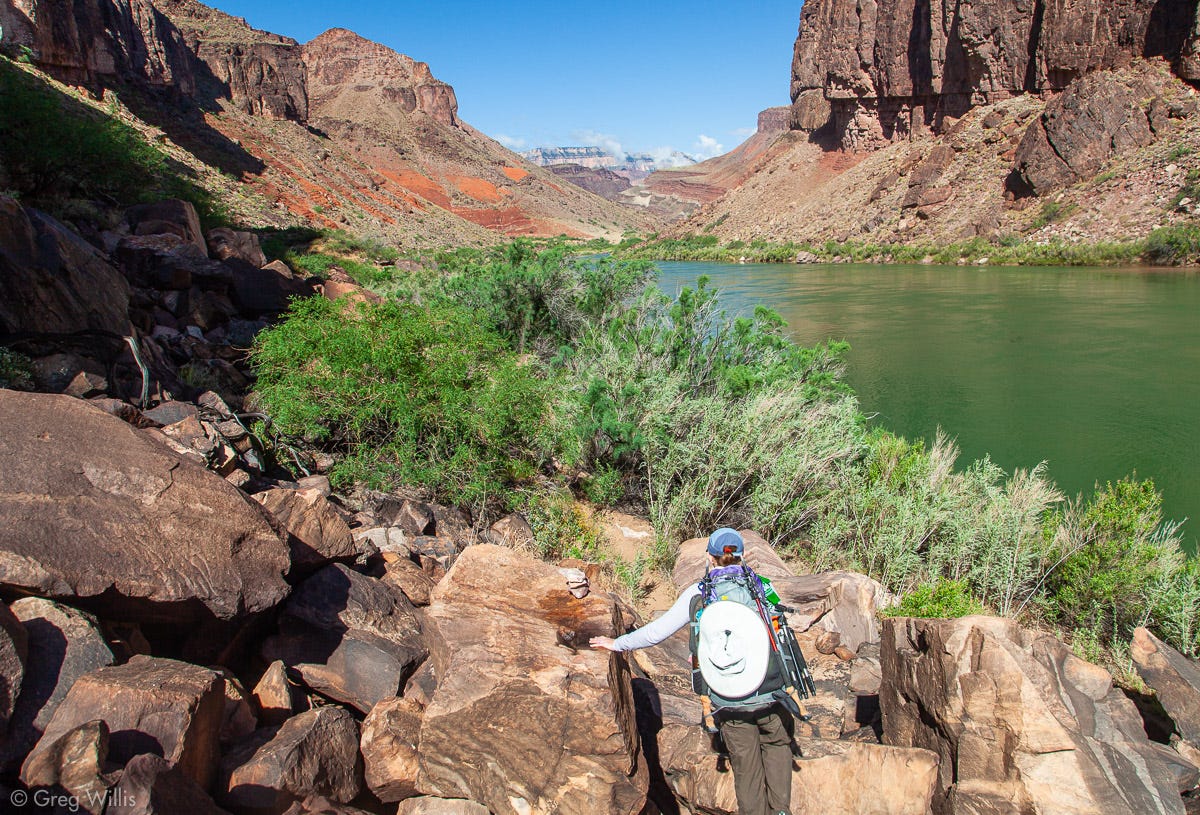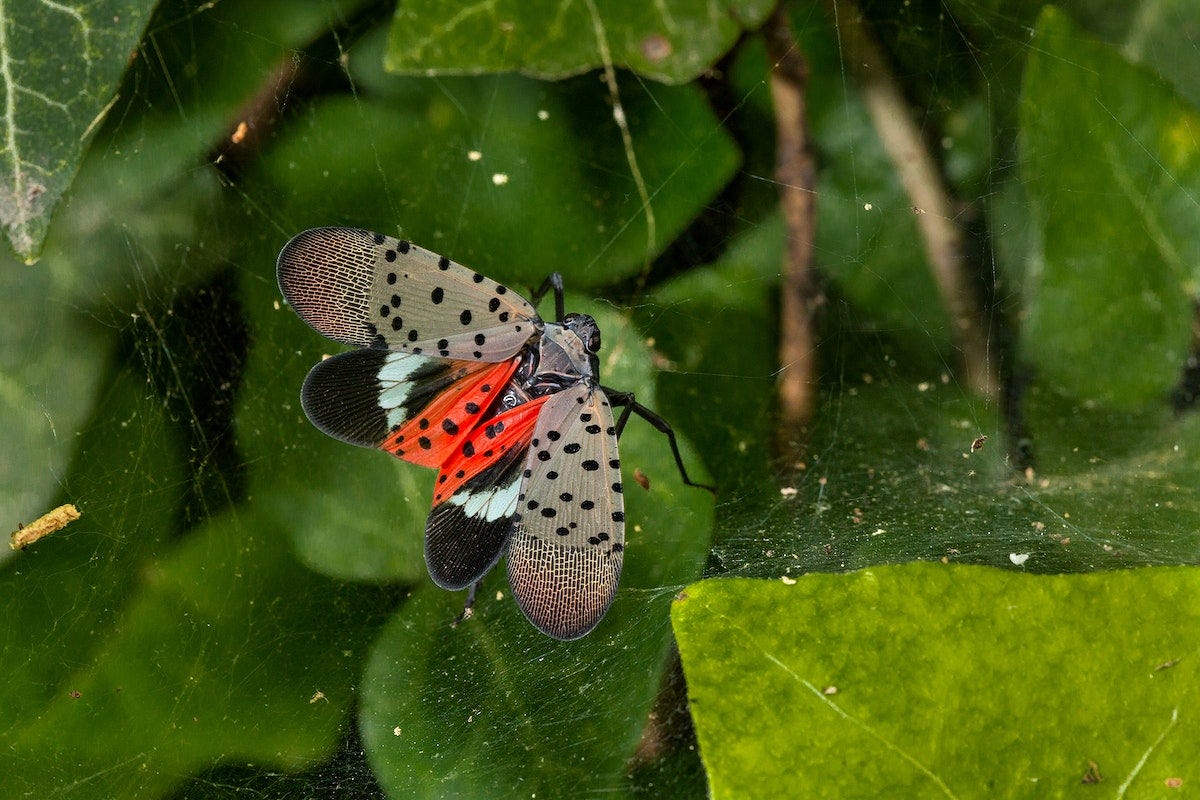perspectives on invasive species
A couple of years ago, it seemed like everyone was stomping on spotted lanternflies.
The lanternflies, originally from China, found their way to the Northeast U.S. where they have ample resources and no natural predators. They feed on the sap of local plants, leaving them vulnerable to disease and other pests, and their excretions attract mold that interferes with photosynthesis. Without predators, their populations can grow unchecked, posing a severe threat to forest health and agriculture.
So we all began engaging in state-sanctioned violence against spotted lanternflies.
The spotted lanternfly’s story is not a new one. For hundreds of years organisms have been introduced (both accidentally and intentionally) into foreign environments where they’re able to thrive, wreaking havoc on local ecosystems.
These organisms are invasive species, or non-native organisms that can cause significant economic and environmental harm to an area. In order to be considered “invasive,” introduced species must be able to adapt quickly to their new environment and cause considerable damage to the indigenous ecosystem.
Invasive species can be animals (like the European starling which outcompetes native North American birds, or the emerald ash borer, an insect that damages indigenous ash trees), plants (Japanese knotweed crowds out native species), or even fungi (Pseudogymnoascus destructans is responsible for white nose syndrome, which has killed millions of bats).
Regardless of what form they take, invasive species are always harmful. In fact, they are considered one of the biggest global threats to biodiversity, right up there with climate change.
But invasive species aren’t really about the species themselves. They’re a product of human influence.
Almost always, invasive species are introduced to their new environment by people. Some are brought deliberately, like kudzu, a vine that was intended to be an ornamental and prevent erosion but instead outcompetes and kills native plants. Others arrive accidentally, often hitching a ride on vehicles like cargo ships.
On my recent trip to the Grand Canyon, the banks of the Colorado River were thick with tamarisk, a shrub that was intentionally brought to the U.S. as an erosion control and now threatens native vegetation in the Southwest. The river itself was also teeming with invasive fishes. Humans have altered river flows and introduced non-native species, endangering the Grand Canyon’s endemic fish population.
It was heartbreaking to see invasive species causing so much damage in a place that is meant to be a sanctuary for the natural ecosystem. But it was also here that my view on invasive species was challenged.
As we paddled past a particularly lush tamarisk population, one of the river guides said, “I like all of the species in the Grand Canyon. Even the tamarisk. They didn’t ‘invade.’ They were brought here.”

To him, the organisms disrupting the ecosystem were blameless and the only “invasive species” were the white colonizers who introduced them.
This perspective was new to me. So often in academia, invasive species are treated as an unfortunate byproduct of globalization, and the species themselves are ruthlessly exterminated. The system of colonialism is frequently overlooked. And I had certainly never heard someone talk about invasives with compassion.
Do I agree that the only invasive species are white colonizers? Ultimately, no.
Invasive species cause a lot of functional damage to ecosystems, endangering native species and disturbing important natural processes. If we don’t deal with them, we risk losing biodiversity, ecosystem services, agricultural products, and entire native landscapes.
I also think we tread a dangerous path to consider any people as “invasive species.” In the case of the Grand Canyon, it’s true that white settlers introduced harmful species, in addition to bringing disease, guns, and violence to Indigenous people in the area. But I feel that assigning the title of “invasive species” to a race of people (a social construct), implies essential differences among humans that provide fodder for further division. Using that terminology to describe human beings has historically gotten us into a lot of trouble, especially when white people have turned it on other groups.
The compassion, however, the willingness to extend grace to invasive species simply because we recognize the intrinsic value of life, has stuck with me.
Perhaps we were a little harsh on the spotted lanternflies. Can we have compassion for an insect as we squish it to death?
Last year one of my ecology professors pointed out that people stepping on spotted lanternflies doesn’t actually help reduce invasive populations, which are concentrated in forests and on agricultural land. A few lanternfly casualties in the streets of New York City have no impact on the greater problem.
But it does encourage people to engage with ecology.
Everyone was able to recognize the spotted lanternfly, and everyone understood how great the threat was. And even though people were killing insects with reckless abandon, they were also learning about the importance of native ecosystems and the danger of invasive species.
It may sound strange, but I believe the lanternfly massacre also nurtures compassion. Whether people are extending sympathy to invasive organisms or banding together to exterminate them, we are learning more about our world. And the more we learn about our world, the more we are able to care for it.
Maybe someday we can all cultivate compassion for the spotted lanternflies themselves, even as we take measures to stop them. Maybe we can learn to love all the parts of our world and understand that loving something requires difficult decisions.
One perspective on invasive species says all organisms deserve compassion. The other says that unrelenting action fosters care for the environment. I think there’s room for both.




